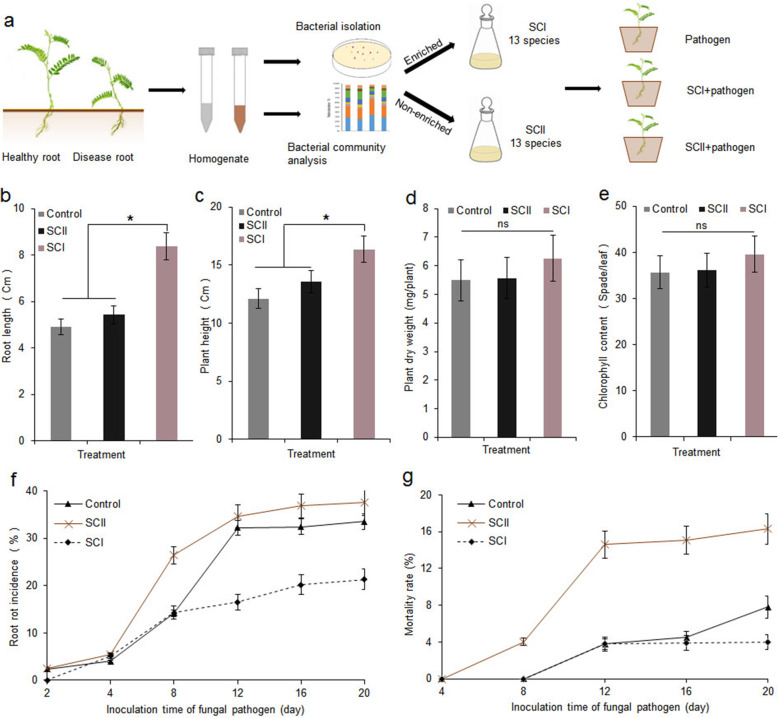Fig. 6.
Synthetic bacterial community assembly and the regulatory effects of synthetic communities on Astragalus root rot. a Processes of establishing synthetic bacterial communities. Bacteria were isolated from the rhizosphere and roots by culturable methods as much as possible, and the different strains of healthy and diseased roots were analyzed. Subsequently, the synthetic community I (SCI) and synthetic community II (SCII) were assembled with enriched and non-enriched bacteria in diseased roots, respectively. b–e Effects of SCI and SCII on root length, plant height, chlorophyll content (n = 20), and plant dry weight (n = 4) 20 days after inoculation. The synthetic bacterial communities were inoculated 5 days before the fungal pathogens were introduced into the soil, and each plant was inoculated with a 2-mL suspension of synthetic communities (~ 108 CFU/mL). Asterisks indicate significant differences (P < 0.05). f–g Effects of SCI and SCII on root rot incidence and plant mortality at different time points after inoculation (n = 45). Each plant was inoculated with a 2-mL spore suspension of F. oxysporum (~ 105 spores/L)

